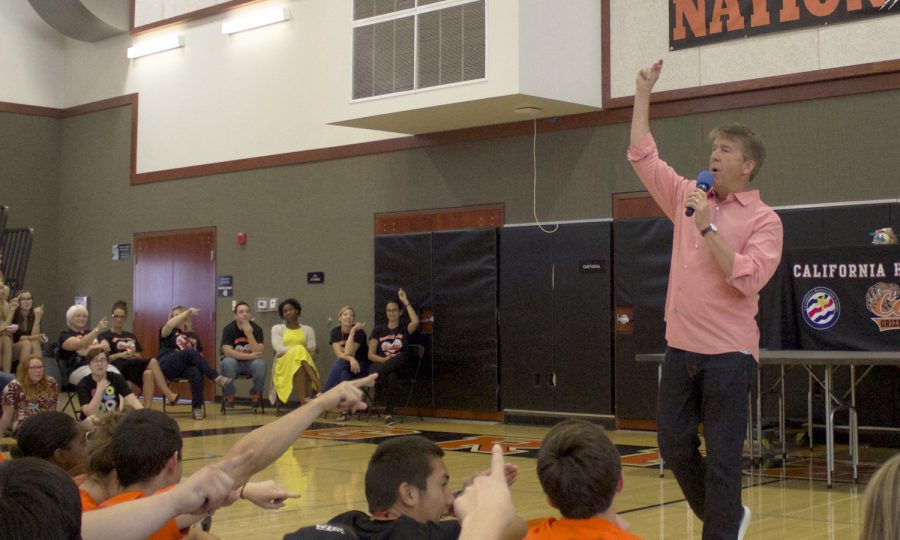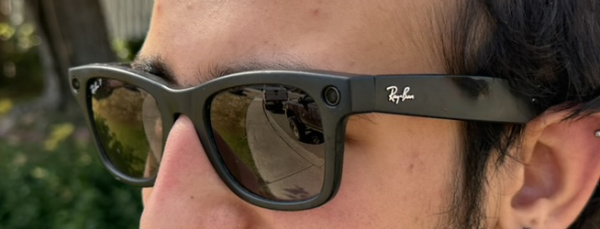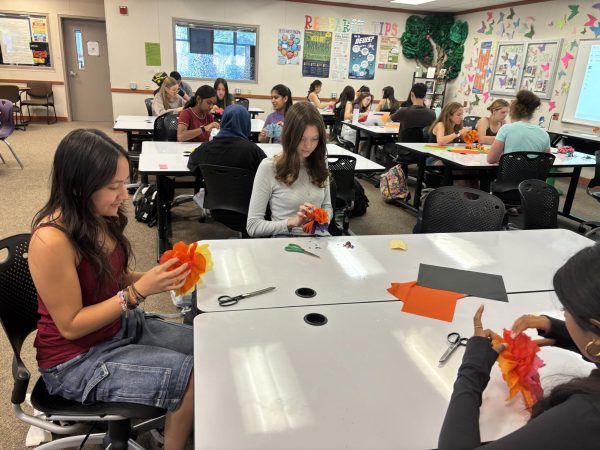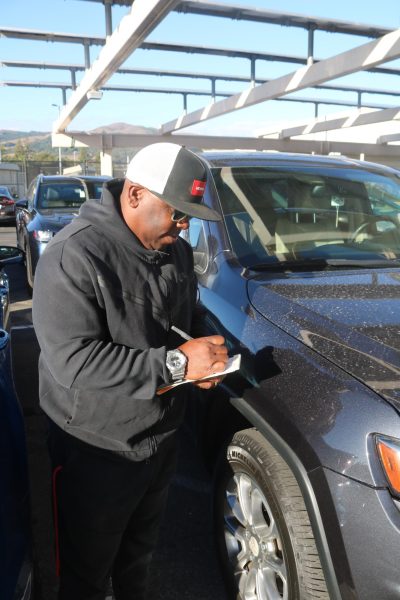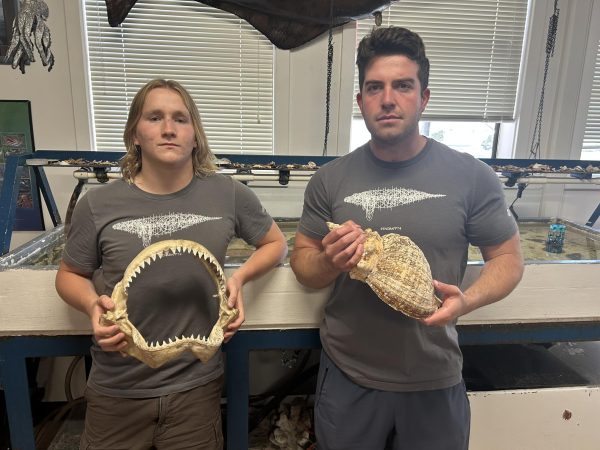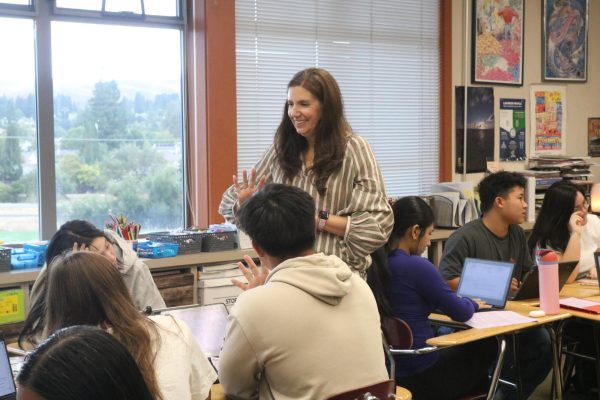Breaking Down the Walls strives to connect students
Breaking Down the Walls founder Phil Boyte speaks to an assembly of students at Cal on Sept. 19. The program works to create a more inclusive and supportive campus for all students and to empower and encourage them in their daily activities.
“It’s hard to hate someone whose story you know.”
Phil Boyte, founder of Breaking Down the Walls, recently brought this message and his national program to Cal High Sept. 19-23, promoting a supportive and inclusive school climate.
Breaking Down the Walls is a week-long program designed to encourage unity and empowerment within students to create a happier and more positive campus environment.
Culinary art teacher Crista Haar contacted Boyte last year, asking him to bring Breaking Down the Walls to Cal. Boyte accepted, and began making plans for his visit this month.
Haar had a life-changing experience in 2004 when Breaking Down the Walls first came to Cal, and she wanted to bring the program’s positive impact to current students.
“I feel like students are depressed, have anxiety, are sad, but teachers don’t even know,” Haar said. “I feel like the buildings are so far apart and I want to bridge the gap between teachers and students.”
Boyte led two separate hour-long assemblies on Sept. 19 to engage students in the program through stories, humor, and questions, which made students psyched about the events to come. Half of the student body attended each assembly.
“At first, I thought it would be pretty dumb, and not that effective,” junior Alex Perez said of the smaller group he participated in. “As soon as things started getting in motion, I really started to understand people and notice that they may not have the most perfect lives that everybody thinks.”
After the second assembly, almost 100 leaders were trained to become facilitators for the smaller workshops, which ran the rest of the week. Every leader and staff member was given a Breaking Down the Walls T-shirt designed by junior Rebekah Chappell.
“I noticed that at first our (small) group was quiet and didn’t open up much,” Perez said. “As the day went on, we got more comfortable and people found it easier to talk about their problems. It was super nice having everyone there to support one another.”
Before the leaders took control of the workshops, everyone got into a large circle, where each participant met and talked to a handful of people. With just about two minutes per partner, people had the chance to learn maybe one or two stories from this new person.
“I think it was neat to meet people and learn little things about them,” junior Enzo Pagliuca said. “I liked getting to know what their dreams and wants were.”
Each leader was put into a group of about eight students and sometimes an adult and worked with that group throughout the entire process that day.
“As a student leader, I was scared at first because I didn’t know how everything was going to go and I thought that my group was going to think of me as a joke,” Pagliuca said. “I messed up in the beginning, but they didn’t seem to mind and after a while I got used to it and it was a one of a kind experience.”
With 32 years of experience, Boyte was able to take a not-so-interested crowd and make a complete turnaround when the workshops begun.
“I think it was a little awkward at first because the kids in the group weren’t sure about what was happening and I was just trying to get us through the activities,” said senior Patrick Boughn.
There were a few activities students did in the group as an icebreaker. These activities ranged from name games and asking questions, to screaming as loud as you can while the rest of the gym stared at the group.
“I liked the teamwork activities,” senior Erika Mattison said. “I wish there were more deep questions so that we could keep engaging in the conversation. It seemed like they answered the question and that was it. It turned to silence.”
After the group activities, lunch was provided and everyone sat with their groups. It was a time to have more casual talk before Boyte brought everyone back together.
Cross the line started with simple questions about crossing if students were left handed or talented in certain ways, but then it got deeper. Slowly, Boyte took the conversation to family situations, fears, and personal struggles.
“After interviewing and crossing the line, [the kids] were much more open and ready to tell their own stories,” said Boughn.
Cross the line was saved for the middle of the day so kids who wouldn’t normally talk would feel comfortable enough to cross the line.
“There are always three choices: yes, no, and, ‘I choose not to answer this,’” Boyte said, when explaining how cross the line would work.
Participants were encouraged to look left, right, and across and notice who was standing with them and not. This helped students realize that they were truly not alone with what they were dealing with.
“I feel like this whole experience was really life changing because the last time I had done anything like this was elementary school,” junior Renee Advincula said. “I felt like I was making people happier, which is one of the things that I like to do.”
Throughout the week, as students came back to their classes, smiling with compliments stuck to their shirts, their friends rushed to Haar’s classroom to find out how to participate.
Many students now feel they have a connection with their group that nobody else has.
Breaking Down the Walls attempted to create friendships and bonds that could last a lifetime.
It was a way for students to share their stories with their peers and teachers, creating a connection around school.
“I know my other classmates better now,” said freshman Porter Ellis. “There is always somebody who knows what is happening and can understand you.”
Boyte’s team believes that Breaking Down the Walls has had the biggest impact on schools and continues to open doors for students and changes lives for the better.
“I hope it resonates with people, and kids that feel disconnected make genuine friendships,” Haar said. “If we could come out of all of this and a kid who never felt connected sees another kid and creates a connection there, that’s all I want.”
Haar and Boyte both hope the program could come every few years so new students can experience the events that just under 800 kids experienced.
Everyone that participated and helped bring Boyte to Cal hopes that this atmosphere stays for a long time.
“It’s a big goal, but I also feel like at Cal High, we’re capable.” Haar said.
